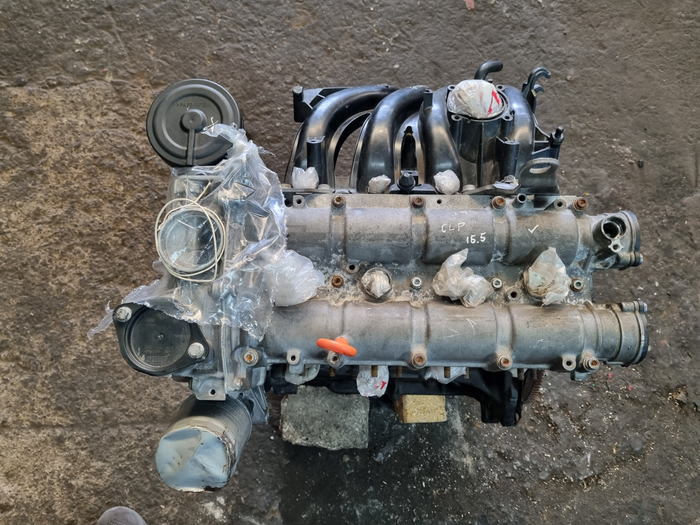Cut down maintenance costs with a well-built clp engine.
Cut down maintenance costs with a well-built clp engine.
Blog Article
How a Clp Engine Can Enhance Effectiveness in Numerous Industries
The introduction of CLP engines marks a considerable shift in operational performance across numerous markets, driven by their capacity to maximize gas usage and reduce downtime. Industries such as manufacturing and logistics stand to get significantly from their durable style and constant power outcome, which promise to enhance operations and enhance productivity. As companies progressively focus on sustainability together with performance, the duty of CLP engines ends up being a lot more crucial. What stays to be seen is exactly how these improvements will certainly form the future landscape of commercial procedures and their effect on broader economic patterns (clp engine).
Overview of CLP Engines
CLP engines, or Continuous Fluid Propellant engines, stand for a substantial development in propulsion technology, particularly for area applications. These engines use a continual feed system that allows for the continual expulsion of propellant, resulting in improved efficiency and efficiency contrasted to traditional strong or hybrid propulsion systems. By keeping a continuous circulation of liquid propellant, CLP engines can attain more accurate thrust control, which is essential for steering spacecraft in different goal situations.
The design of CLP engines incorporates sophisticated materials and ingenious gas monitoring systems. clp engine. This leads to reduced weight and enhanced integrity, necessary elements for long-duration space goals. In addition, the constant procedure minimizes the threat of combustion instability, an usual obstacle in standard rocket engines.

Advantages in Manufacturing
The production of Continuous Fluid Propellant (CLP) engines offers numerous significant advantages that improve both performance and cost-effectiveness. One of the primary advantages is the streamlined manufacturing procedure, which decreases the complexity connected with traditional propulsion systems. By making use of fluid propellant, producers can attain greater precision in engine performance, bring about enhanced power output and lowered waste.
In addition, CLP engines promote a higher degree of modularity, enabling simpler integration into various production lines. This versatility can considerably decrease lead times and improve total operational flexibility. Making use of CLP technology also has a tendency to lessen the need for comprehensive maintenance because of less relocating parts, which translates right into reduced downtime and operational costs.

Applications in Logistics
Leveraging Continual Fluid Propellant (CLP) engines in logistics offers substantial benefits in operational performance and reliability. These engines provide a durable remedy for various transportation needs, making it possible for the seamless activity their explanation of items across huge ranges. The inherent style of CLP engines permits for constant power output, which translates into smoother and a lot more foreseeable transport routines.
Among the vital applications of CLP engines in logistics remains in heavy-duty freight transport, where they can drive both ground and aerial lorries. Their capability to preserve high performance under varying tons conditions makes certain that shipment timelines are satisfied, thus improving customer complete satisfaction. Furthermore, CLP engines can be integrated into automated logistics systems, helping with real-time tracking and enhancing course planning.
In addition, the durability of CLP engines minimizes upkeep downtime, allowing logistics firms to optimize their functional capabilities. This is especially useful in warehousing operations, where effectiveness in dealing with and transferring goods is critical. As logistics remains to progress, the integration of CLP engines represents a forward-thinking method that not only boosts efficiency however additionally supports the sector's expanding needs for dependability and rate.
Influence on Energy Performance
How do Continuous Liquid Propellant (CLP) engines improve power performance in transportation? CLP engines make use of a consistent circulation of fluid gas, optimizing combustion processes and keeping a steady thrust result. This layout decreases use this link power losses connected with traditional burning engines, where gas delivery can vary and lead to inadequacies.
The continual procedure of CLP engines allows for a more effective thermal cycle, leading to higher particular impulse contrasted to traditional engines. clp engine. This equates to lowered fuel consumption for the same quantity of work done, significantly lowering functional prices throughout various transport industries, including air travel and maritime industries
Furthermore, the capability of CLP engines to preserve optimal performance under varying tons conditions lowers the need for regular acceleration and deceleration, even more enhancing fuel performance. Improved energy performance not only contributes to cost savings yet also brings about reduce greenhouse gas discharges, lining up with global sustainability objectives.
Future Trends and Innovations
Arising advancements in Continuous Liquid Propellant (CLP) engine innovation pledge to transform the landscape of transportation performance and sustainability. As markets pivot toward greener alternatives, CLP engines stand at the center, integrating cutting-edge materials and layout approaches that improve performance while minimizing ecological Bonuses influence.
Among one of the most encouraging fads is the adoption of crossbreed systems that combine CLP engines with renewable resource sources. This harmony can enhance fuel consumption and lower exhausts, lining up with worldwide sustainability objectives. Developments in computational fluid dynamics (CFD) are assisting in the style of even more aerodynamically efficient engines, leading to decreased drag and enhanced fuel effectiveness.
Moreover, the growth of wise surveillance systems is established to boost functional effectiveness. These systems leverage data analytics and IoT technology to optimize engine efficiency in real-time, making certain that the engines operate within their most efficient parameters.
As research study continues to check out alternate propellant solutions-- such as biofuels and artificial gas-- the future of CLP engines looks promising. By taking advantage of these innovations, industries can not only enhance their performance but additionally contribute substantially to a cleaner, extra sustainable future in transportation.
Final Thought
In conclusion, CLP engines stand for a considerable development in performance throughout several markets. The combination of advanced products and less moving components decreases maintenance demands, while alignment with sustainability objectives placements CLP engines as an essential innovation for the future.
Report this page